-
 Bitcoin
Bitcoin $82,889.2590
-0.46% -
 Ethereum
Ethereum $1,793.2293
-1.49% -
 Tether USDt
Tether USDt $0.9997
-0.02% -
 XRP
XRP $2.0568
0.29% -
 BNB
BNB $592.2304
-1.63% -
 USDC
USDC $1.0000
0.01% -
 Solana
Solana $115.7109
-3.42% -
 Dogecoin
Dogecoin $0.1619
-2.01% -
 Cardano
Cardano $0.6496
-0.45% -
 TRON
TRON $0.2390
0.90% -
 UNUS SED LEO
UNUS SED LEO $9.5630
1.80% -
 Toncoin
Toncoin $3.5272
-7.56% -
 Chainlink
Chainlink $12.7869
-3.09% -
 Stellar
Stellar $0.2602
-1.42% -
 Avalanche
Avalanche $18.0792
-2.71% -
 Shiba Inu
Shiba Inu $0.0...01214
-1.56% -
 Sui
Sui $2.2014
-8.72% -
 Hedera
Hedera $0.1623
-2.00% -
 Polkadot
Polkadot $4.0239
-1.09% -
 Litecoin
Litecoin $83.2407
0.28% -
 MANTRA
MANTRA $6.3682
0.89% -
 Bitcoin Cash
Bitcoin Cash $301.4692
-0.02% -
 Bitget Token
Bitget Token $4.4785
-1.45% -
 Dai
Dai $1.0000
0.01% -
 Ethena USDe
Ethena USDe $0.9994
-0.05% -
 Monero
Monero $214.4062
-0.61% -
 Hyperliquid
Hyperliquid $11.7638
-4.95% -
 Pi
Pi $0.5645
-15.24% -
 Uniswap
Uniswap $5.8559
-2.26% -
 Aptos
Aptos $5.0161
-4.08%
What impact does technical indicators have on market judgment under different market conditions?
Technical indicators provide crucial insights and confirmation signals for traders navigating different market conditions, ranging from bullish and bearish trends to sideways markets and potential trend reversals.
Feb 23, 2025 at 05:36 pm
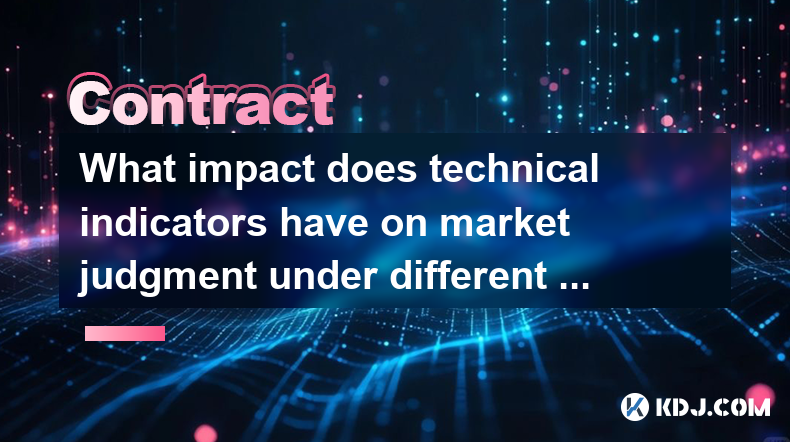
Key Points of the Article:
- Impact of Technical Indicators on Market Judgment in Bullish Conditions
- Impact of Technical Indicators on Market Judgment in Bearish Conditions
- Impact of Technical Indicators on Market Judgment in Sideways Market Conditions
- Role of Technical Indicators in New Market Trends
- Common Pitfalls in Using Technical Indicators
Impact of Technical Indicators on Market Judgment under Different Market Conditions
Bullish Conditions
- Uptrend confirmation: Technical indicators can signal an ongoing uptrend by displaying rising price action, positive momentum, and supportive volume. This confirmation provides traders with the basis for entering long positions and aiming for potential gains.
- Trend strength determination: Indicators like moving averages, oscillators, and Bollinger Bands help traders assess the strength of the uptrend. Strong trends indicate continued bullish momentum and higher probability of profitable returns.
- Profit target estimation: Technical indicators enable traders to set profit targets based on price levels and momentum indications. They provide reference points for locking in profits at favorable times.
- Candlestick patterns: Bullish candlestick patterns, such as engulfing patterns, morning stars, and piercing lines, signal potential trend reversals or trend continuation, providing traders with entry or exit points.
Bearish Conditions
- Downtrend confirmation: Indicators like trend lines, indicators, and volume patterns can indicate a prevailing downtrend. This confirmation helps traders identify selling opportunities and avoid potential losses.
- Weakness identification: Technical indicators highlight price action weakness, negative momentum, and waning volume. These signals aid traders in recognizing potential downturns and preparing for market reversal.
- Support and resistance levels: Indicators like horizontal lines and Fibonacci levels assist traders in identifying support and resistance areas. These levels act as points of potential trend reversals or price consolidations.
- Divergence detection: Divergence between price action and technical indicators, such as oscillators or moving averages, can signal potential trend changes. Traders use divergence to anticipate potential trend reversals or their continuation.
Sideways Market Conditions
- Trend identification: Indicators like moving averages, Bollinger Bands, and Ichimoku clouds aid traders in determining whether a market is in a sideways trend, as characterized by a range-bound price action.
- Range boundaries: Technical indicators help establish range boundaries within which prices fluctuate sideways. This understanding facilitates the identification of potential breakout points for entering positions.
- Volume analysis: Monitoring volume levels and their relationship with price action provides insights into the strength of the sideways trend. Low volume can indicate consolidation, while rising volume can signal a potential breakout.
- Breakouts: Technical indicators offer signals for potential breakouts from sideways ranges, such as candlestick patterns, chart patterns, and moving average crossovers. Traders utilize these signals to enter positions in anticipation of trend reversals.
Role of Technical Indicators in New Market Trends
- Trend identification: Indicators like moving averages, trend lines, and oscillators assist in recognizing the early stages of new market trends. They help traders spot price breakouts and shifts in momentum.
- Momentum measurement: Technical indicators measure price momentum to identify the strength and sustainability of new trends. Strong momentum can indicate a higher probability of a trend's continuation.
- Confirmation signals: Technicians rely on multiple indicators to confirm emerging trends. Positive indications from several indicators provide a stronger basis for taking positions in new market trends.
- Volatility assessment: Indicators like Bollinger Bands, volatility indices, and historical volatility gauges help traders evaluate the risk associated with new market trends. Traders adjust their positions based on volatility assessments to manage risk and optimize returns.
Common Pitfalls in Using Technical Indicators
- Overreliance: Relying solely on technical indicators can lead to flawed decisions, as indicators work best when combined with other market analysis techniques.
- Lagging nature: Indicators often lag behind price action, potentially resulting in delayed signals and missed trading opportunities.
- Subjectivity: Technical indicators are subjective and open to interpretation, leading to different conclusions among traders.
- False signals: Indicators can produce false signals, particularly during periods of market volatility or extreme price movements.
- Indicator fatigue: Monitoring multiple indicators simultaneously can overwhelm traders, leading to confusion and ineffective decision-making.
FAQs
How can technical indicators help me make better trades?
Technical indicators provide signals, patterns, and insights that assist traders in understanding market trends, price movements, and potential opportunities. They enhance traders' abilities to assess market conditions, identify trading setups, and manage their positions effectively.
What are some of the most popular technical indicators?
Some widely used technical indicators include moving averages, Bollinger Bands, oscillators, relative strength index (RSI), stochastic, and Fibonacci levels. Each indicator serves a specific purpose and caters to different trading styles.
How can I avoid common pitfalls when using technical indicators?
To mitigate pitfalls, traders should combine technical indicators with other analysis methods, avoid overreliance, be aware of indicator limitations, and understand the subjective nature of indicators.
What resources can I use to learn more about technical indicators?
Numerous resources are available, including trading books, online courses, and trading platforms that provide comprehensive guides, tutorials, and training programs on technical indicators.
Can technical indicators guarantee successful trading?
While technical indicators offer valuable insights and signals, they cannot guarantee successful trading outcomes. Trading involves risk and requires a combination of knowledge, skill, and experience to make informed decisions.
Disclaimer:info@kdj.com
The information provided is not trading advice. kdj.com does not assume any responsibility for any investments made based on the information provided in this article. Cryptocurrencies are highly volatile and it is highly recommended that you invest with caution after thorough research!
If you believe that the content used on this website infringes your copyright, please contact us immediately (info@kdj.com) and we will delete it promptly.
- "The market views if growth slides, then traditional risk assets will slide and crypto is correlated to traditional risk assets"
- 2025-04-04 10:50:11
- Between Oct. 25, 2024, and Jan. 16, 2025
- 2025-04-04 10:50:11
- Trump's New Tariffs Send Ripples Through Global Markets, Affecting Stocks and Digital Assets
- 2025-04-04 10:45:12
- Global Markets Tank as Trump Introduces New Tariff Model
- 2025-04-04 10:45:12
- Tesla (NASDAQ:TSLA) shares tank 8% in premarket as Q1 deliveries miss estimates by a wide margin
- 2025-04-04 10:40:12
- Arctic Pablo Coin: The Next Breakout Meme Coin Promises 9084.48% ROI
- 2025-04-04 10:40:12
Related knowledge
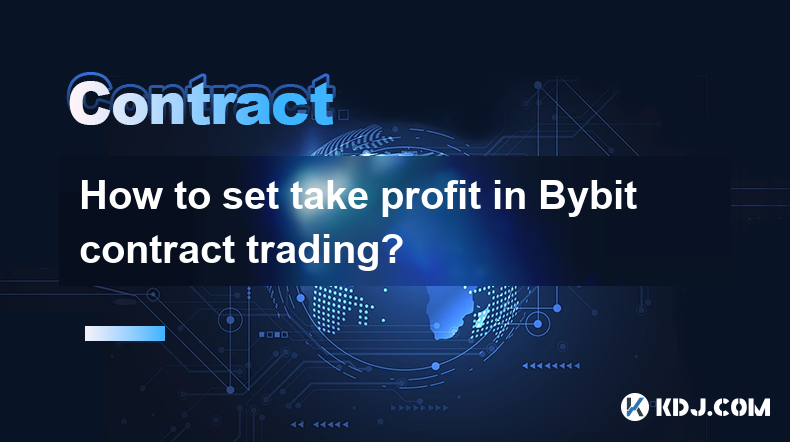
How to set take profit in Bybit contract trading?
Apr 04,2025 at 10:22am
Setting take profit in Bybit contract trading is an essential skill for managing your trades effectively. Bybit, a popular cryptocurrency derivatives exchange, allows traders to set take profit orders to automatically close positions when they reach a certain profit level. This helps in securing gains without the need for constant monitoring. To set a t...

How to trade CoinEx leveraged futures?
Apr 03,2025 at 03:56am
Trading leveraged futures on CoinEx can be an exciting way to potentially amplify your profits in the cryptocurrency market. Leveraged futures allow traders to borrow funds to increase their trading position, which can lead to higher returns, but also comes with increased risk. In this article, we will guide you through the process of trading CoinEx lev...

What are the risks of KuCoin futures trading?
Apr 03,2025 at 01:14am
KuCoin futures trading offers traders the opportunity to speculate on the future price of cryptocurrencies, but it comes with its own set of risks that traders need to be aware of. Understanding these risks is crucial for anyone looking to engage in futures trading on the KuCoin platform. This article will delve into the various risks associated with Ku...
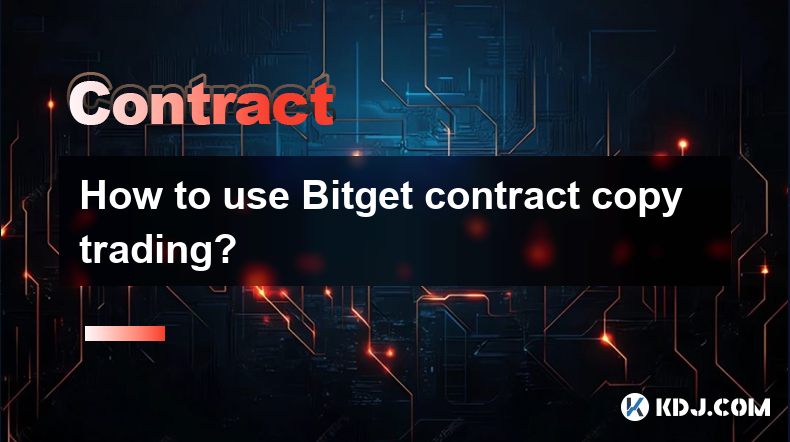
How to use Bitget contract copy trading?
Apr 03,2025 at 08:28am
Bitget's contract copy trading feature allows users to automatically replicate the trades of experienced traders, known as 'lead traders.' This can be a valuable tool for those looking to benefit from the expertise of others without having to spend time analyzing the market themselves. To start using this feature, you first need to understand how to sel...
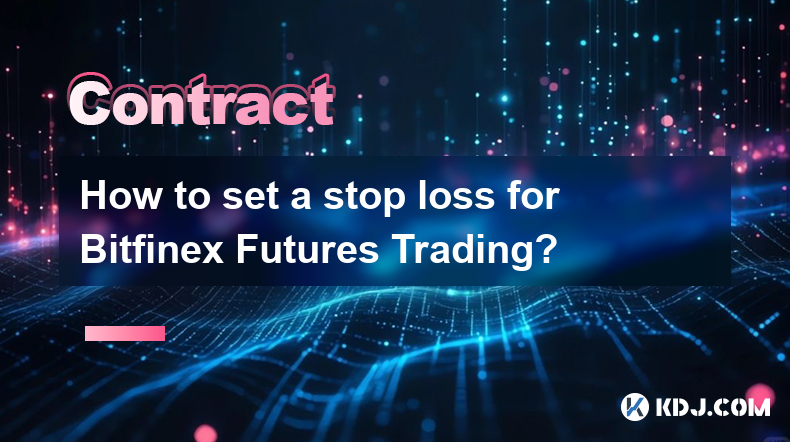
How to set a stop loss for Bitfinex Futures Trading?
Apr 03,2025 at 12:35pm
Setting a stop loss for Bitfinex Futures Trading is an essential risk management strategy that can help traders limit potential losses. A stop loss order is an instruction to sell a futures contract when it reaches a certain price, helping you to manage your exposure in volatile markets. To set a stop loss on Bitfinex, you need to navigate through the p...
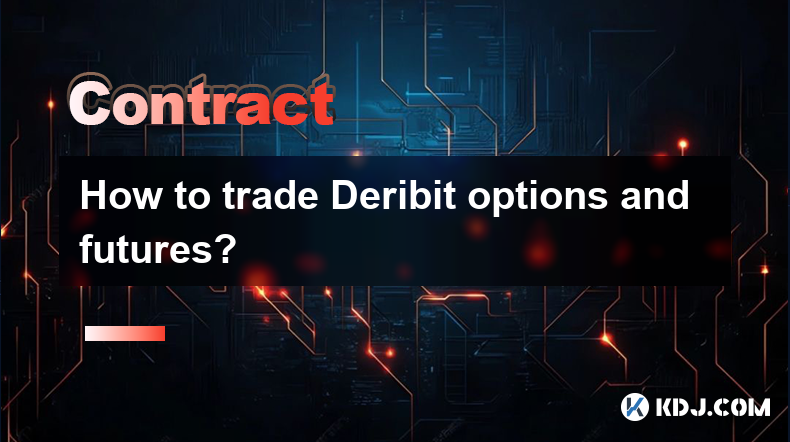
How to trade Deribit options and futures?
Apr 03,2025 at 02:00pm
Trading Deribit options and futures can be an exciting venture for those interested in the cryptocurrency market. Deribit, a leading platform for crypto derivatives, offers a variety of trading instruments including options and futures on Bitcoin and Ethereum. To successfully trade on Deribit, it's essential to understand the basics of these financial i...

How to set take profit in Bybit contract trading?
Apr 04,2025 at 10:22am
Setting take profit in Bybit contract trading is an essential skill for managing your trades effectively. Bybit, a popular cryptocurrency derivatives exchange, allows traders to set take profit orders to automatically close positions when they reach a certain profit level. This helps in securing gains without the need for constant monitoring. To set a t...

How to trade CoinEx leveraged futures?
Apr 03,2025 at 03:56am
Trading leveraged futures on CoinEx can be an exciting way to potentially amplify your profits in the cryptocurrency market. Leveraged futures allow traders to borrow funds to increase their trading position, which can lead to higher returns, but also comes with increased risk. In this article, we will guide you through the process of trading CoinEx lev...

What are the risks of KuCoin futures trading?
Apr 03,2025 at 01:14am
KuCoin futures trading offers traders the opportunity to speculate on the future price of cryptocurrencies, but it comes with its own set of risks that traders need to be aware of. Understanding these risks is crucial for anyone looking to engage in futures trading on the KuCoin platform. This article will delve into the various risks associated with Ku...

How to use Bitget contract copy trading?
Apr 03,2025 at 08:28am
Bitget's contract copy trading feature allows users to automatically replicate the trades of experienced traders, known as 'lead traders.' This can be a valuable tool for those looking to benefit from the expertise of others without having to spend time analyzing the market themselves. To start using this feature, you first need to understand how to sel...

How to set a stop loss for Bitfinex Futures Trading?
Apr 03,2025 at 12:35pm
Setting a stop loss for Bitfinex Futures Trading is an essential risk management strategy that can help traders limit potential losses. A stop loss order is an instruction to sell a futures contract when it reaches a certain price, helping you to manage your exposure in volatile markets. To set a stop loss on Bitfinex, you need to navigate through the p...

How to trade Deribit options and futures?
Apr 03,2025 at 02:00pm
Trading Deribit options and futures can be an exciting venture for those interested in the cryptocurrency market. Deribit, a leading platform for crypto derivatives, offers a variety of trading instruments including options and futures on Bitcoin and Ethereum. To successfully trade on Deribit, it's essential to understand the basics of these financial i...
See all articles






















































































